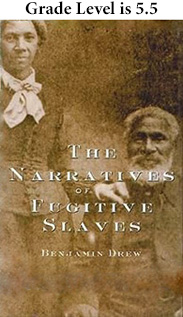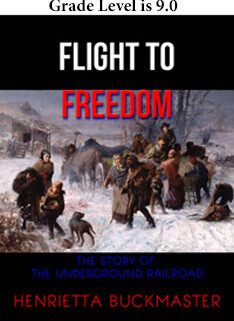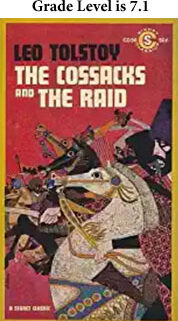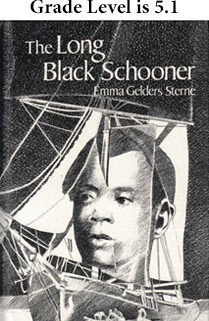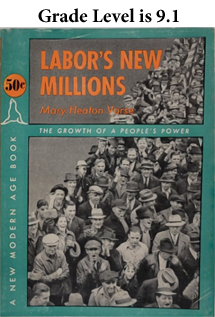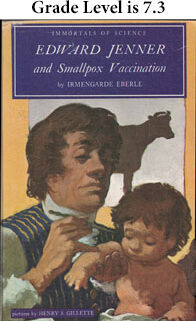The Narratives of Fugitive Slaves by Benjamin Drew
The epub format below is for your Apple and Android devices including Send-to-Kindle for Amazon device.
As you may know, Amazon has changed to the epub format to use with the Send-to-Kindle program. A great feature of the Send-to-Kindle program is that the file will go directly to your Library folder, and does not have to be searched for in ES File Explorer or another app. If you use the mobi format in Send-to-Kindle, you will now get an error message. You can see instructions about Send to Kindle at https://www.amazon.com/gp/sendtokindle/email.
If you or your students want to download directly from this web site to an Amazon device, you can use the mobi format below. When you find the mobi file in ES File Explorer, it will then open in the Kindle app on your tablet. If you download an epub file to your Amazon tablet, it will also open if you have an app such as Overdrive on your tablet. The Kindle app offers an excellent reading experience to start with. Overdrive may need some customization of font size.
A Review from The Wall Street Journal
“To compile this book, Benjamin Drew, a white abolitionist from Plymouth, Mass., visited 14 communities in Canada and transcribed the stories of more than 100 formerly enslaved people. The result is a chorus of voices illuminating a harrowing chapter of history and the astonishing feats of resistance that ultimately beat back the system of American chattel slavery. Occupying a mere half-page near the beginning of the book is Harriet Tubman. She opens: “I grew up like a neglected weed—ignorant of liberty, having no experience of it.” The many narratives here are as ripe with metaphor as they are with exquisitely detailed recollections of the land and people encountered during escape, and with wonderfully rich descriptions of often-prosperous enterprises created once freedom was achieved. This is the Underground Railroad’s multiperson memoir, with all the power and gravitas of an epic poem.” (From the The Wall Street Journal. “Five Best: Books on the Underground Railroad.” Selected by Kai Thomas, the author, most recently, of ‘In the Upper Country.’ By Kai Thomas January 13, 2023)
Reviewers on GoodReads
- “Most slave stories I’ve come across end in total despair and hopelessness. This is different. These are the victory stories of freedom in the face of daunting hopelessness, but they did it, they freed themselves! Still the lives of those brave souls faced other troubles. You feel with them, but freedom often gave a sense of relief despite almost everything else.”
- “I found this book by chance at a library book sale!
It is a collection of over 100 testimonies of slaves who escaped the United States by way of the Underground Railroad to Canada.
The effect of reading testimony after testimony of the fugitive slaves as they enter Canada is incredibly moving. And these are simply reports, just taking down the facts. For any emotion, you’ll have to read between the lines.
These accounts, as you can imagine, give the reader a glimpse into the brutality, loss of dignity, and inhumane-ness of the slave trade. Even the few who were “treated well” were longing for freedom and even willing to risk their lives to find it.
This book should be required reading! It is such a valuable record (straight from the mouths of slaves and not an interpretation of their stories) and gives insights into attitudes towards issues of race and slavery, the echoes of which we still – and must continue to – wrestle with today.”

